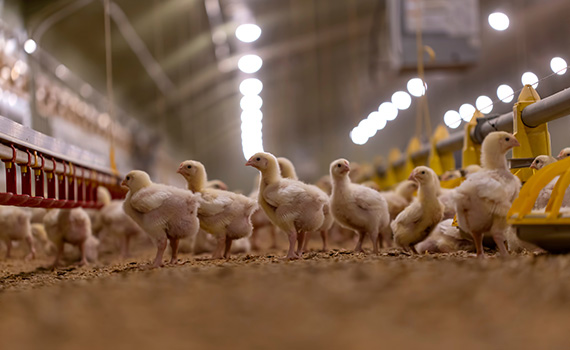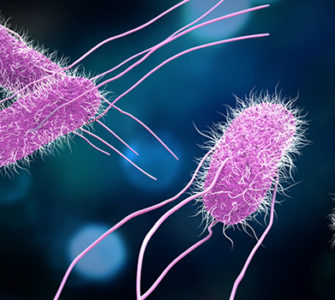Live vaccines are key to Salmonella-control programs — here’s why
Modified-live vaccines (MLVs) against paratyphoid Salmonella serotypes help reduce colonization and excretion of wild strains of the bacterium. The vaccines also lessen the impact of heterologous strains in young poultry, which have immature immune systems.
That’s the conclusion of a review paper from a number of industry experts, published in Avian Diseases.1
Immune responses to Salmonella infection are complex, say the authors, but vaccination has become a key component of multi-step control programs.
Live vaccines have several advantages over killed vaccines, they say. These include surface antigens that provide cross-protection against different Salmonella serotypes such as Typhimurium, Enteritidis and Infantis, as well as the ability to generate cell-mediated immunity and stimulate production of antibodies to protect mucosal surfaces.
“A company doesn’t have just one Salmonella serovar. They’ll have multiple Salmonella serovars and so the real take home is that if I use a live Salmonella vaccine, I’m going to get protection against multiple Salmonella serovars,” Charles Hofacre, DVM, PhD, lead author of the review, told Poultry Health Today.
“Another main point is that using a live Salmonella vaccine in your young breeders is very important because it gives them protection and helps to prevent them from becoming colonized with some of these ‘bad guys’ that cause human illness,” said Hofacre, of the Southern Poultry Research Group, Inc.
Check your serotypes
He cautioned that even though live vaccines provide cross-protection against multiple serotypes, they don’t provide the same level of cross-protection to all of them. Salmonella Kentucky is a particular case in point, he said.
Even though S. Kentucky in the US has not been linked to any major outbreaks of human illness, the presence of the pathogen still counts against a processing plant.2 USDA does not differentiate between S. Kentucky and pathogenic strains of the bacterium.
“Salmonella is a failure; the strain doesn’t matter. If you’re having a problem in your processing plant, and you’re having lots of Salmonella isolations, you need to understand that maybe a live vaccine in broilers won’t have as great an impact if Kentucky is the primary Salmonella [in the plant]. It’s also important to know which serovars are in your breeders. To me, it all begins in the breeders, and what we send from the breeders goes through the hatchery to the broiler farm,” he added.
Tackling live-vaccine myths
Hofacre has found that some producers have misconceptions about the use of live vaccines.
“The vaccines are not a miracle. They’re not going to completely eliminate Salmonella. And I know that there are some people who think, ‘I’m on a live vaccine. Why am I still having problems in my processing plants?’ Well, it’s because the load is so high that you can’t just knock it down with the live vaccine,” he explained.
Another misconception is that MLVs will clear from broilers before the birds get to processing, but that’s not always the case. Some live vaccines clear and some will not, Hofacre said.
Room for improvement
In their review, Hofacre and co-authors said research has suggested that multiple applications of live vaccines may confer the greatest levels of protection. They also mention opportunities to improve MLVs against paratyphoid Salmonella in the future.
In the interview, Hofacre said, “I would love to see a live vaccine that we could give one time because both of the vaccines that are available in the US today give maximal protection, but you have to give them twice — first in the hatchery and then again in the field.”
1 Hofacre CL, Rosales AG, Da Costa M, Cookson K, Schaeffer J, Jones MK. Immunity and protection provided by live modified vaccines against paratyphoid salmonella in poultry—An applied perspective. Avian Dis. 2021;65(2):295-302.
2 Soltys R, et al. High-Resolution Comparative Genomics of Salmonella Kentucky Aids Source Tracing and Detection of ST198 and ST152 Lineage-Specific Mutations. Front Sustain Food Syst. 2021 July 30.
Posted on July 19, 2022















